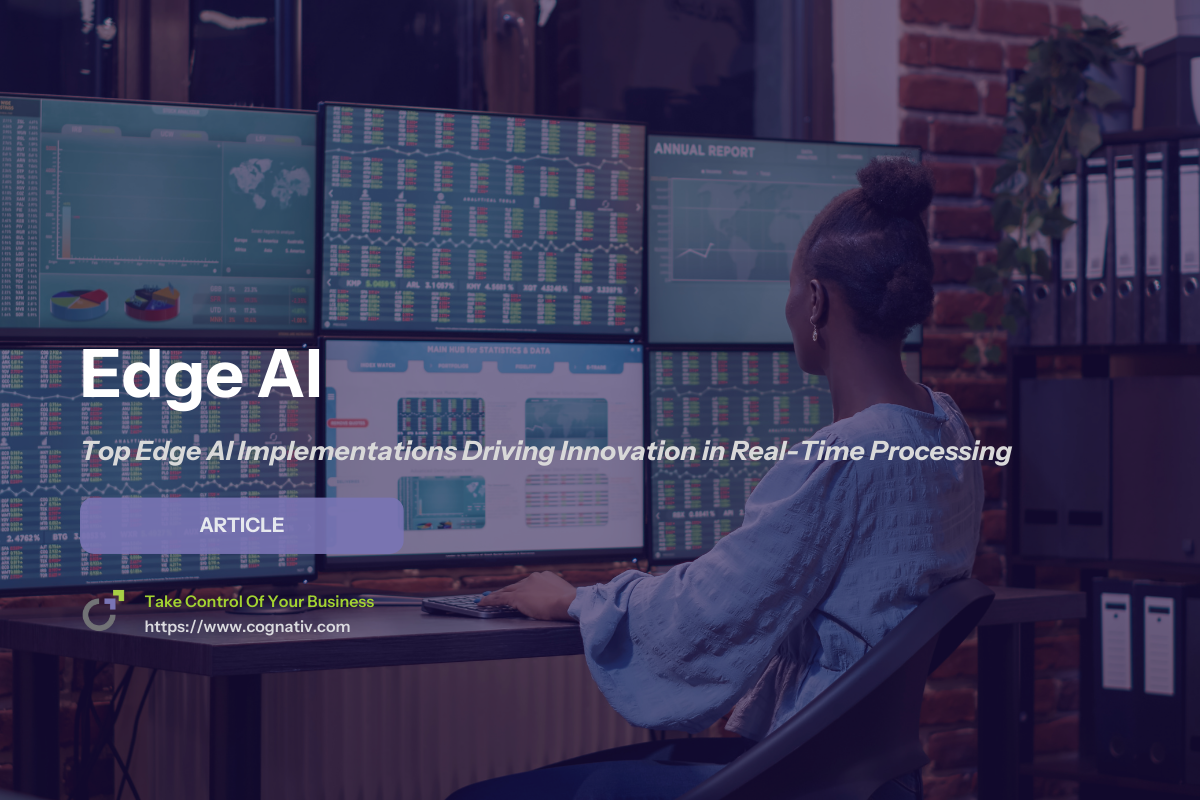Top Edge AI Implementations Driving Innovation in Real-Time Processing
Edge AI is one of the most disruptive innovations in modern technology. At its core, it combines the power of edge computing with artificial intelligence, enabling real time data processing directly on edge devices such as IoT sensors, industrial controllers, cameras, and autonomous vehicles.
Instead of relying on cloud servers for every task, edge AI processes data locally, bringing the computational power closer to where data is generated. This shift allows businesses and developers to:
Eliminate constant cloud connectivity, making systems more resilient.
Improve real time decision making, which is essential for safety-critical systems like self driving cars and robotics.
Enhance privacy and security, since sensitive data does not need to be constantly transmitted.
Reduce bandwidth usage and achieve significant cost savings.
The rise of edge AI implementations has created entirely new categories of ai applications in autonomous systems, industrial automation, healthcare, and even consumer smart devices.
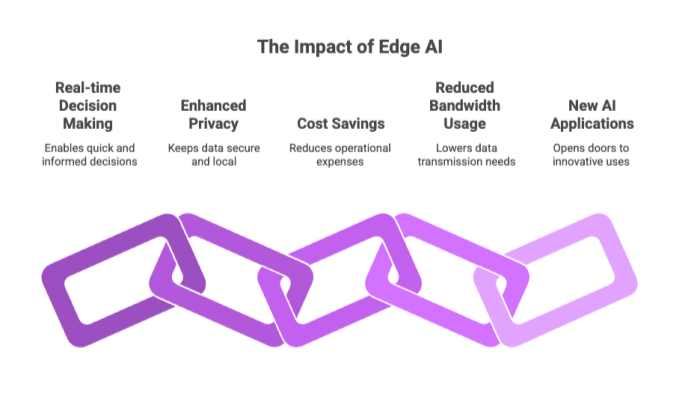

Benefits of Edge AI
The benefits of edge AI go far beyond speed. Organizations that integrate edge AI technology into their business operations are unlocking measurable value across efficiency, cost, and security.
1. Enhanced Security & Privacy
Because processing data locally is central to edge AI’s design, sensitive information remains on the device. This reduces exposure to cyberattacks, limits data breaches, and ensures patient privacy in healthcare scenarios.
2. Reduced Latency
In edge AI applications such as robotics or autonomous vehicles, every millisecond matters. By running inference on the device, real time processing is achieved without waiting for responses from distant cloud servers.
3. Predictive Maintenance & Fault Tolerance
Industries can now predict equipment failures before they happen. By running predictive maintenance models on edge devices, manufacturers reduce downtime and enhance fault tolerance. Systems keep running even during internet connectivity issues.
4. Cost Efficiency
With less sending data back to centralized systems, organizations save on bandwidth usage and reduce dependency on large-scale cloud processing. This leads to long-term cost savings and lower operational costs.
5. Power & Energy Efficiency
Optimized ai models running on specialized chips like neural processing units (NPUs) enable power consumption reductions. These models balance real time data needs with energy efficiency, critical in wearable devices and industrial environments.
Put simply, edge AI’s ability to improve decision making, secure ai applications, and optimize resources is why adoption is skyrocketing across industries.
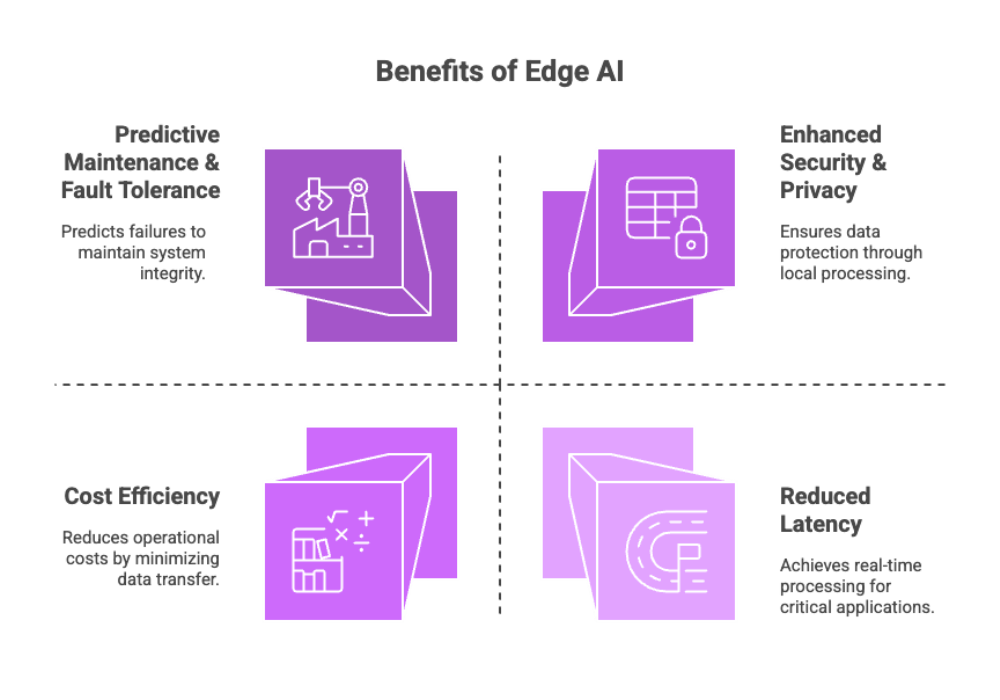

Edge AI Technology: How Edge AI Works
The foundation of edge AI technology lies in how it merges machine learning algorithms with edge computing hardware.
Neural Processing Units (NPUs):
Specialized chips designed for real time monitoring and inference.
Provide enhanced security by keeping data processing on-device.
Machine Learning Models:
Trained in the cloud, optimized, and compressed through model compression.
Deployed on edge devices for fast, local execution.
Processing Data Locally:
By processing data locally, edge systems avoid cloud processing delays.
Results are immediate, enabling real time decision making.
Resiliency:
Edge AI systems remain operational even with poor connectivity.
This is crucial for autonomous systems, industrial controllers, and traffic control.
Optimization Techniques:
Compression, pruning, and quantization reduce ai model size while maintaining accuracy.
Ensures operational efficiency in ai powered sensors and wearable devices.
In short, edge AI solutions are built on hardware-software co-optimization, making them versatile enough for both business processes and consumer electronics.
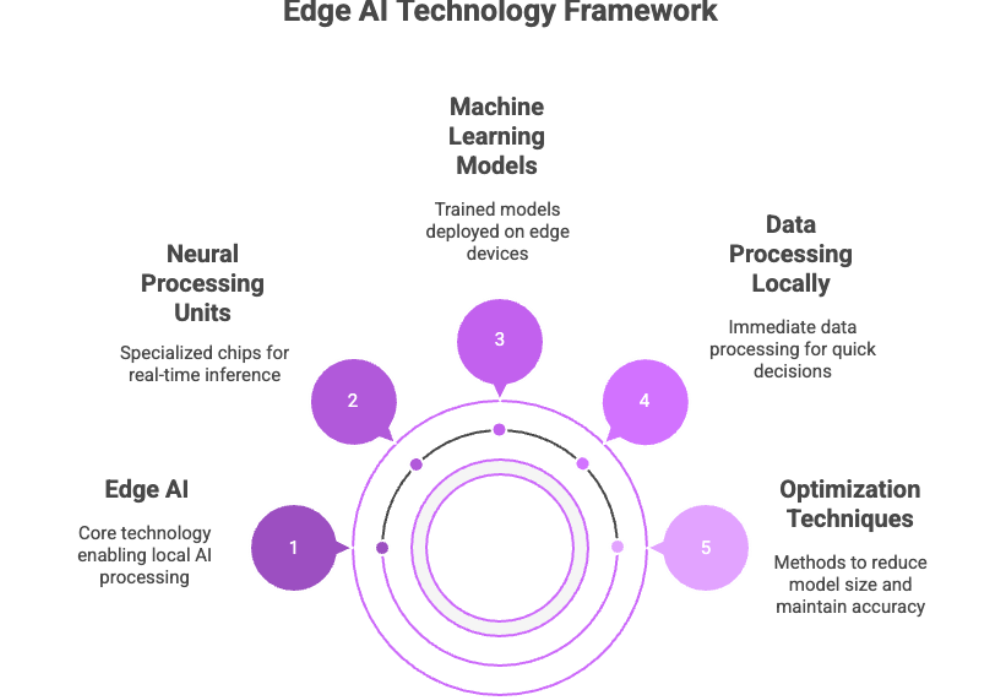

Edge AI vs. Cloud AI
When comparing edge AI and cloud AI, the key differences reveal why both will continue to coexist in modern ai systems.
Feature |
Edge AI |
Cloud AI |
|---|---|---|
Latency |
Ultra-low, supports real time data processing |
Higher latency due to data transmission |
Bandwidth Usage |
Lower (local inference) |
Higher (continuous uploads) |
Enhanced Privacy |
Data stays on device, reducing security risks |
Data stored on remote servers |
Scalability |
Limited by device hardware |
Near-unlimited in cloud computing environments |
Best Use Cases |
Autonomous decision making, predictive maintenance, automated quality inspection |
Model training, big data analysis, cross-device aggregation |
Key Takeaway
Cloud AI is best for large-scale model training and heavy analytics.
Edge AI is ideal for real time processing, risk assessment, and situations requiring enhanced privacy.
A hybrid model that blends cloud servers with edge AI processes data locally often delivers the strongest results.

Autonomous Systems
One of the most impactful edge AI implementations is in autonomous systems — machines that make decisions without direct human control.
Self-Driving Cars and Autonomous Vehicles
Self driving cars are powered by a network of edge devices: LIDAR sensors, high-definition cameras, and radar systems.
These sensors generate terabytes of real time data, which must be analyzed instantly.
Edge AI’s ability to run machine learning models directly on the vehicle reduces latency and allows for split-second decision making.
Key examples of edge AI applications in vehicles:
Collision avoidance: Vehicles process sensor data locally to detect obstacles.
Navigation: Edge inference engines interpret traffic control signals without cloud reliance.
Predictive analytics: Edge AI helps anticipate equipment failures in autonomous fleets.
Why Edge AI is critical here: Any delay in processing data locally could result in accidents. With enhanced privacy and fault tolerance, cars continue to function even if cloud connectivity drops.


Industrial Automation
Factories and industrial plants are embracing edge AI solutions to optimize operations, reduce downtime, and improve workplace safety.
Predictive Maintenance
Machines fitted with ai powered sensors track vibration, temperature, and load.
Predictive maintenance models detect early signs of wear and predict equipment failures before breakdowns.
By deploying edge AI, companies reduce costly shutdowns and ensure operational efficiency.
Automated Quality Inspection
Automated quality inspection uses computer vision running on edge devices.
Cameras capture product images, while machine learning algorithms classify defects in near real time.
This improves throughput, reduces waste, and enhances business processes.
Worker Safety
In industrial environments, edge AI technology monitors worker positions, detecting unsafe conditions in real time monitoring.
Risk assessment models running on rugged edge devices reduce workplace accidents.
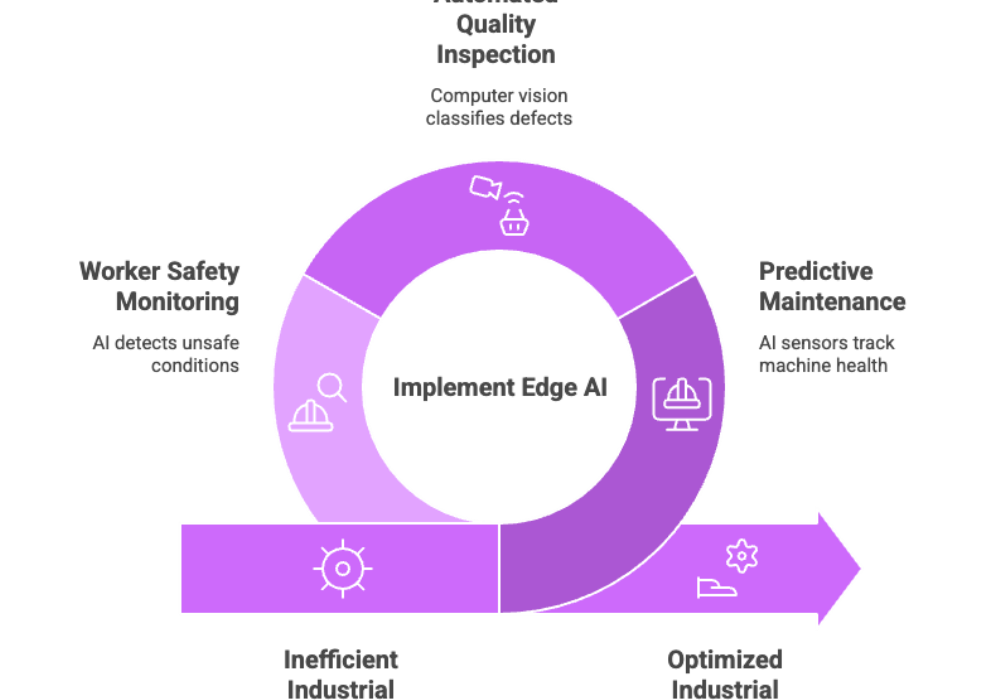

Healthcare and Medical Edge AI
Healthcare providers are rapidly deploying edge AI solutions to balance patient privacy with the demand for real time decision making.
Diagnostic Imaging
Machine learning models for object detection and classification analyze CT scans, MRIs, and X-rays directly on local edge devices.
This reduces dependency on cloud servers, protects sensitive information, and speeds up critical diagnoses.
Remote Patient Monitoring
Wearable edge devices track heart rate, oxygen levels, and activity in real time.
Edge AI processes data locally, sending only anomalies to hospitals, which reduces bandwidth usage and ensures energy efficiency.
Emergency Response
Ambulances equipped with edge AI applications can analyze patient vitals instantly.
Real time processing provides paramedics with predictive analytics for treatment decisions before reaching the hospital.
Enhanced security is vital in healthcare — keeping sensitive data local prevents leaks while maintaining compliance with regulations like HIPAA.
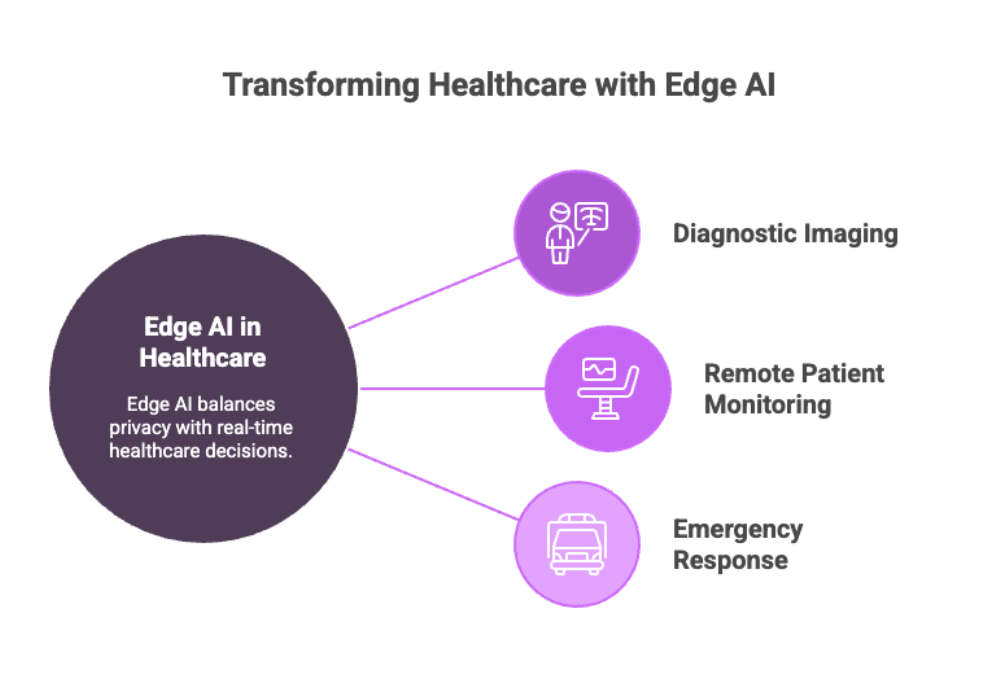

Smart Cities and Infrastructure
Edge AI implementations are transforming the design of smart homes, smart cities, and urban infrastructure.
Traffic Optimization & Control
Edge-powered cameras and sensors at intersections handle real time monitoring.
Edge AI’s ability to interpret traffic flow helps reduce congestion and accidents.
Public Safety
Computer vision running on surveillance edge devices detects anomalies in crowds.
Local ai algorithms provide real time decision making for law enforcement without overloading cloud servers.
Smart Homes and Appliances
From smart home appliances like refrigerators to energy systems, edge AI technology personalizes automation.
Devices can process data locally, ensuring enhanced security while still learning from feedback loops.


Retail and E-Commerce
Retailers are leveraging edge AI solutions to improve business operations and customer experience.
Automated Checkout
IoT devices equipped with cameras use ai algorithms for object detection and automated quality inspection.
Edge devices identify products in real time, reducing wait times and improving business processes.
Personalized Shopping
Predictive analytics deployed on edge devices helps recommend products instantly.
Unlike cloud-driven systems, edge AI applications process preferences locally, preserving sensitive data.
Fraud Detection
Point-of-sale systems use real time monitoring with ai algorithms to flag anomalies instantly.
This minimizes losses and improves trust in business operations.


Energy and Industrial Environments
The energy sector is adopting edge AI to manage industrial environments and optimize resources.
Grid Management
Edge AI helps balance power flows in industrial controllers, reducing outages.
Predictive maintenance models anticipate component failures in energy systems.
Renewable Energy
Solar and wind farms deploy edge AI technology to manage equipment under harsh conditions.
Systems are optimized for wide temperature range support and fault tolerance.
Worker and Equipment Safety
Edge devices in oil rigs or factories analyze sensor data in near real time.
This ensures workplace safety while lowering operational costs.
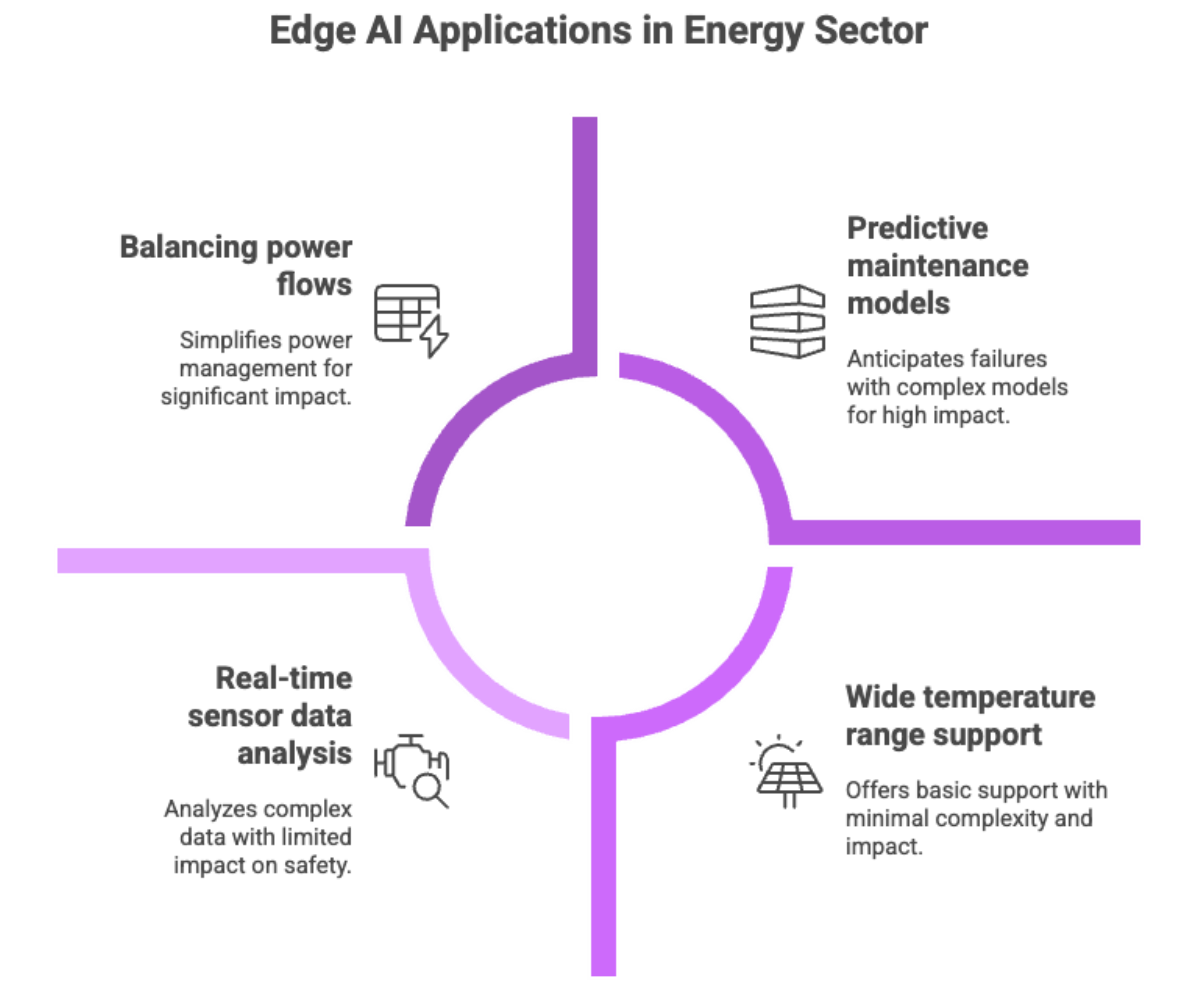

Summary of Real-World Implementations
Across all industries, edge AI implementations deliver:
Enhanced security for sensitive information.
Real time data processing for faster decision making.
Predictive maintenance to predict equipment failures.
Lower bandwidth usage and improved energy efficiency.
Reduced operational costs and higher fault tolerance.
These examples illustrate why edge AI applications are exploding in popularity and why they are becoming central to modern technology ecosystems.
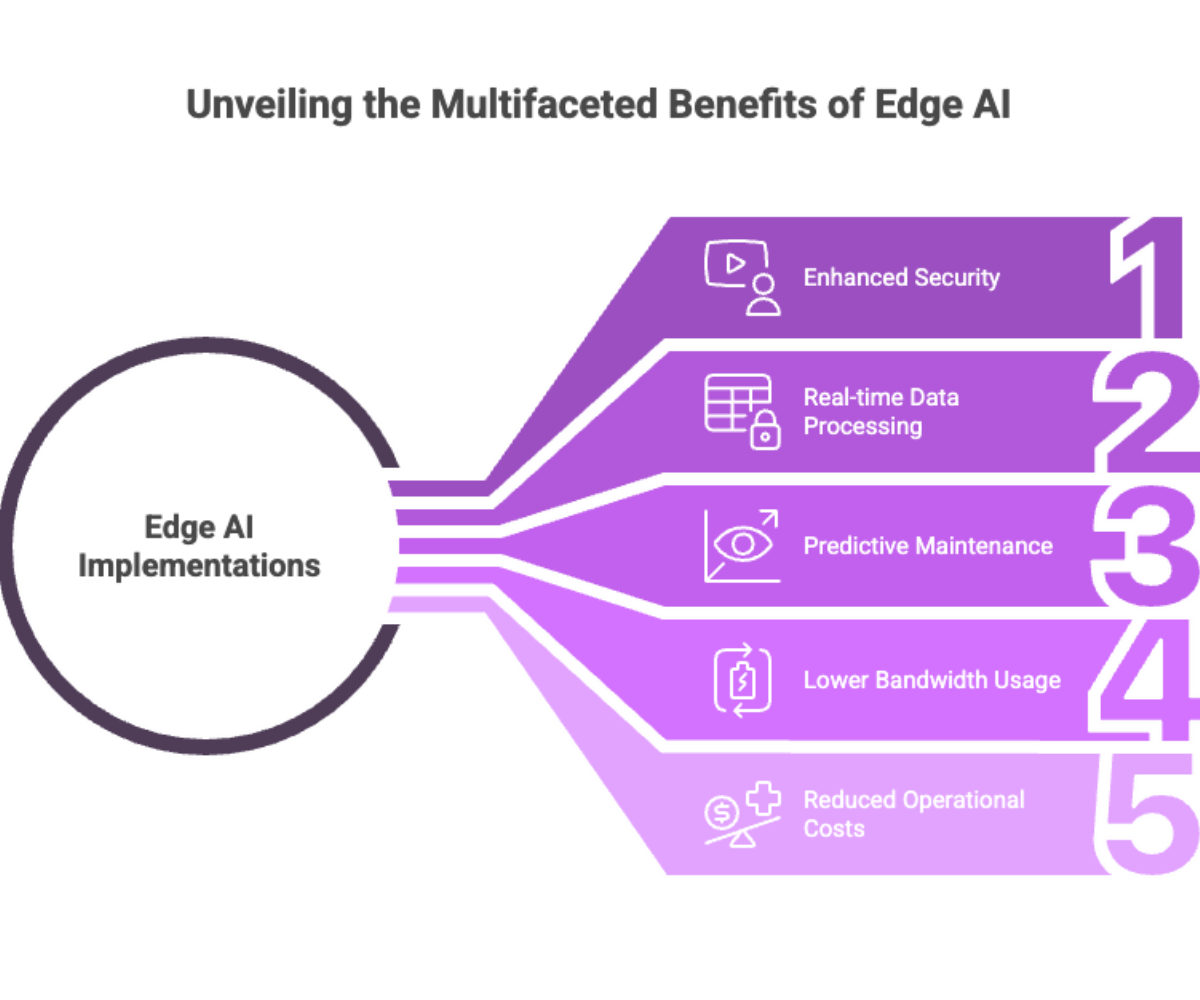

Edge AI Platforms and Tools
To truly harness the power of edge ai technology, businesses and developers rely on edge ai platforms — software and hardware ecosystems designed to deploy AI models seamlessly on edge devices.
Popular Edge AI Platforms
NVIDIA Jetson Platform
Known for strong ai acceleration using embedded GPUs.
Ideal for computer vision and robotics applications.
Supports machine learning models and deep learning inference.
Intel OpenVINO
Optimized for intel core ultra processors and NPUs.
Provides ai optimized performance for industrial environments.
Enables deploying edge ai across cameras, sensors, and industrial controllers.
Google Edge TPU
Compact edge devices with dedicated hardware for ai algorithms.
Highly energy efficient, perfect for smart homes and wearable devices.
Microsoft Azure Percept
Combines edge computing with cloud ai to enable hybrid solutions.
Simplifies deploy ai models and managing edge deployments.
These edge ai platforms allow developers and data scientists to train models in the cloud and push optimized inference engines to edge devices with minimal effort.


Emerging Trends in Edge AI
The future of edge ai is rapidly unfolding. Several trends highlight how edge ai applications will evolve:
1. Hybrid Edge + Cloud AI
Cloud computing remains vital for model training.
Edge devices handle real time decision making and real time data processing.
Hybrid setups combine cloud servers for heavy lifting and local processing for immediate responses.
2. Federated Learning at Scale
Federated learning ensures sensitive data stays on-device.
Updates are shared securely, enabling model performance improvements without sending data to the cloud.
This will reshape ai applications in healthcare providers and finance as private AI becomes increasingly important.
3. Specialized AI Hardware
Growth of neural processing units (NPUs), AI accelerators, and edge hardware built for ai inference.
This hardware enables deploying edge ai in resource constrained edge devices while maintaining high performance.
4. Expansion into Smart Infrastructure
Smart homes, industrial environments, and autonomous vehicles will dominate edge deployments.
Expect ai at the edge to manage traffic control, energy systems, and even workplace safety.
5. Sustainability and Energy Efficiency
With growing demand, energy efficiency and reduced power consumption are major goals.
Edge ai technology is evolving to optimize data processing while lowering carbon impact.
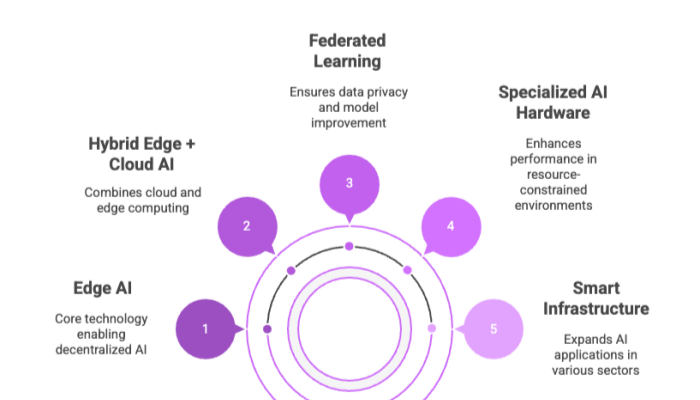

Benefits of Leading Edge AI
Let’s revisit the key benefits of edge ai that keep it ahead of cloud only solutions:
Real time processing → Essential for self driving cars, predictive analytics, and industrial automation.
Enhanced security → Keeps sensitive information local, reducing security risks.
Fault tolerance → Systems continue to operate even without solid network connectivity.
Reduced operational costs → Optimizes bandwidth usage, storage, and power consumption.
Increased efficiency → Enables faster, smarter business operations and decision making.
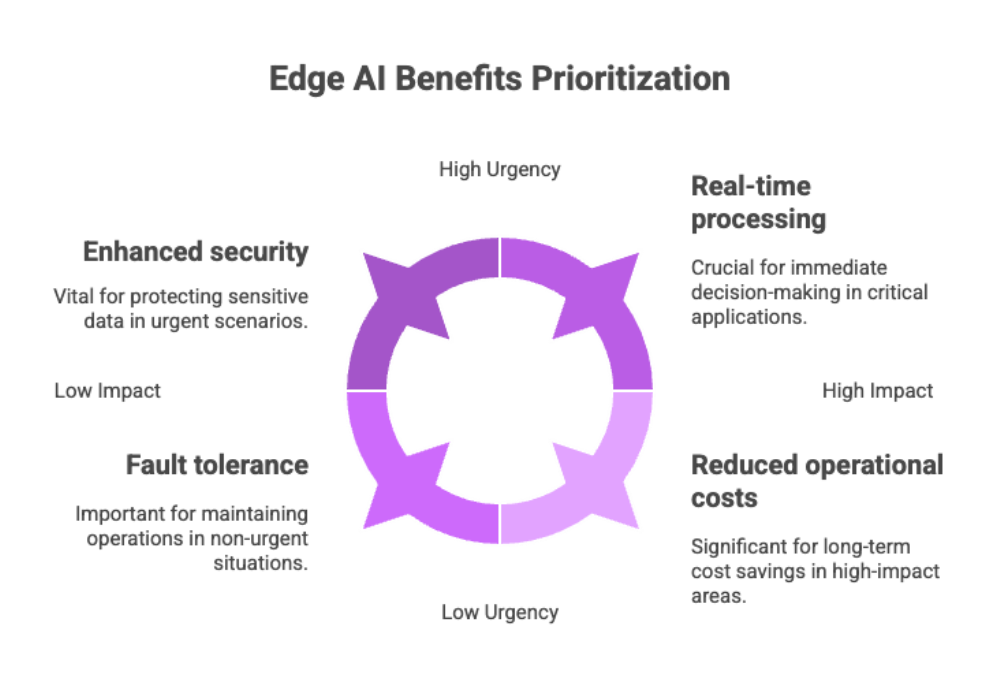

Edge AI vs. Cloud AI: The Long-Term Perspective
While cloud ai provides scale, edge ai implementations are the leading choice for:
Autonomous decision making in vehicles, drones, and robotics.
Automated quality inspection in factories.
Patient privacy in healthcare.
Real time monitoring in industrial environments and smart cities.
The key differences make it clear:
Cloud AI = heavy compute + global collaboration.
Edge AI = real time decision making + local processing.
The future lies in hybrid architectures that combine both seamlessly.
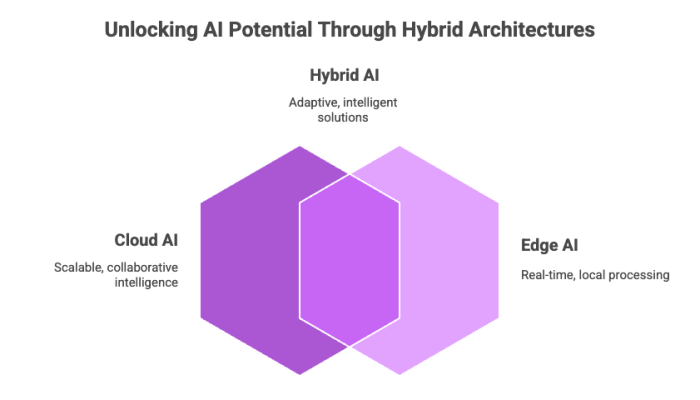

Future Outlook: Where Edge AI is Heading
Looking ahead, the future of edge ai will likely be shaped by:
AI-powered sensors that reduce the need for data transmission altogether.
Inference engines embedded in every device, from wearables to industrial controllers.
AI applications in risk assessment, worker safety, and real world problems like energy efficiency.
Expansion of edge ai use cases into agriculture, logistics, and defense.
Business processes becoming more autonomous, data-driven, and optimized through ai at the edge.
As edge computing works closer to data sources, businesses will save time, market faster, and unlock new business models.
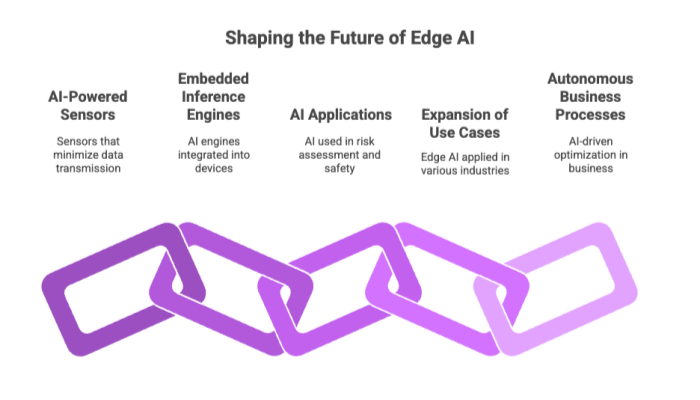

Conclusion
So, what is the leading edge computing for AI inferences?
It’s the edge computing framework that integrates:
Compact edge devices for lightweight AI.
Rugged edge servers for harsh environments and complex ai models.
Neural processing units and accelerators for high performance AI workloads.
Edge ai platforms that simplify deploy ai models and monitoring.
Hybrid architectures that combine cloud computing with local edge devices.
The benefits are undeniable:
Reduced latency.
Improved reliability.
Enhanced security and privacy.
Lower operational costs.
Smarter, real time decision making.
In short, the leading edge ai implementations are those that bring artificial intelligence closer to where data is created. From autonomous vehicles to smart homes and industrial automation, edge AI is the foundation of the next digital revolution.

